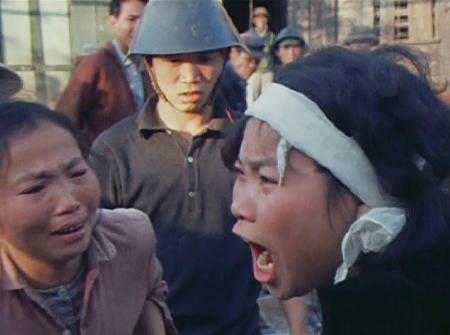North Vietnam's Suffering: A Visual History – Scars of War and Resilience
The Second Indochina War, often referred to as the Vietnam War in the West, left an indelible mark on Vietnam. While much attention focuses on the American experience, the suffering endured by the people of North Vietnam remains a crucial, often overlooked, aspect of this complex conflict. This article explores the visual history of North Vietnam's suffering, showcasing the resilience of its people amidst immense hardship. We'll delve into the impact of bombing campaigns, the challenges of daily life under constant threat, and the enduring legacy of this period.
The Devastation of Bombing Campaigns: A Visual Record
The relentless bombing campaigns, particularly during Operation Rolling Thunder, inflicted catastrophic damage on North Vietnam's infrastructure and civilian population. Images from this era paint a stark picture:
- Destroyed Villages and Cities: Photographs depict the widespread destruction of homes, schools, and hospitals, leaving countless families homeless and vulnerable. The visual impact of these bombed-out landscapes underscores the human cost of the war.
- Casualty Images: While graphic imagery should be approached with sensitivity, carefully curated photographs can offer a powerful glimpse into the suffering inflicted upon civilians. These images, often found in archival collections and documentaries, tell stories of loss and trauma that words alone cannot fully capture.
- The Impact on Infrastructure: Images showcasing the destruction of bridges, railways, and power plants highlight the systematic attempt to cripple North Vietnam's economy and war effort. This systematic destruction severely hampered the nation's ability to rebuild and recover.
Finding and Interpreting these Images:
Accessing these historical images requires careful research. Reputable archives like the and the offer valuable resources. Academic databases and online museum collections can also yield significant findings. Remember to always be mindful of the ethical considerations when viewing and sharing sensitive imagery.
Daily Life Under Siege: A Glimpse into Resilience
Beyond the dramatic imagery of destruction, equally compelling are the photographs depicting daily life in North Vietnam during the war. These images reveal a remarkable resilience:
- Everyday Life Amidst Conflict: Pictures of families going about their daily routines, despite the constant threat of bombing, showcase the unwavering spirit of the Vietnamese people. These images capture moments of quiet strength and determination.
- Collective Effort and Support: Photographs depicting communal activities, such as repairing damage or tending to the wounded, illustrate the importance of collective resilience and mutual support. This spirit of community became a vital lifeline during those challenging times.
- The Role of Women: Visual records highlight the critical role women played in sustaining their families and communities amidst the hardships of war. From working in fields to tending to the wounded, their contributions were essential to the nation's survival.
The Importance of Contextualization:
Understanding the historical context surrounding these images is crucial for proper interpretation. It's vital to avoid simplistic narratives and instead consider the complexities of the war and the diverse experiences of the North Vietnamese people.
The Enduring Legacy: Remembering and Learning
The visual history of North Vietnam's suffering during the war is not simply a record of the past; it's a powerful reminder of the devastating consequences of conflict and the importance of peace. By examining these images with sensitivity and respect, we can gain a deeper understanding of this crucial period in history and learn valuable lessons for the future.
Further Exploration: We encourage readers to explore the numerous documentaries, books, and archival collections dedicated to this period to gain a more complete understanding of North Vietnam's experiences during the war. This visual history should serve as a catalyst for continued reflection and dialogue.
